A herniated disc is a condition where a part of the disc between the bones of the spine protrudes and presses on the nerves, causing symptoms such as pain and numbness in the arms and legs. The disc acts as a cushion between the vertebrae, allowing the spine to move flexibly.
Behind the spine is a space called the spinal canal, which is surrounded by bones. This canal contains the nerves connecting the brain to the limbs. When a disc protrudes into this space and presses on the nerves, it can cause pain or numbness in the arms and legs, or make it difficult to move them.
This condition is commonly seen in men aged 20 to 40, but it can occur in people of all age groups, from the young to the elderly.
Typically, lower back pain or symptoms similar to “lumbago” are observed, followed by severe pain or numbness radiating to one leg after a few days. These symptoms are often intense, making it difficult to move and disrupting sleep. However, the peak of the symptoms usually passes within 2-3 weeks, and the symptoms gradually subside. The pain and numbness mainly affect the buttocks and legs, causing difficulty in movement and weakness. These symptoms may occur anywhere in the lower body, but pain from the buttocks to the back of the thigh is commonly known as sciatica and is a representative symptom of lumbar hernia.
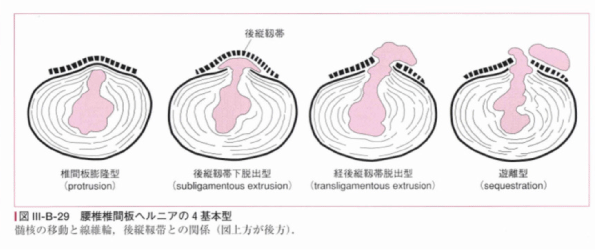
In cervical disc herniation, symptoms such as pain, numbness, difficulty moving, and weakness in the hands and arms are observed. Depending on the location of the hernia, pain or numbness may also occur around the neck and shoulder blades. In severe cases, numbness in the legs or difficulty walking may also occur.
Before the symptoms appear in the arms and legs, pain in the neck or lower back may be felt. These symptoms may appear suddenly or gradually. These symptoms may also occur in conditions such as spinal stenosis, making it difficult to differentiate based on symptoms alone.
A herniated disc occurs when part of the soft cartilage (intervertebral disc) between the vertebrae protrudes from its normal space and compresses or irritates the nerves, leading to pain or numbness.
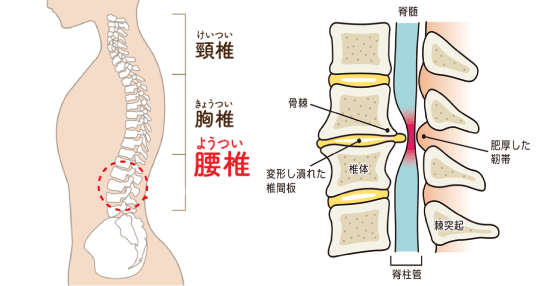
The intervertebral disc has few blood vessels, so its nutrition relies on diffusion from surrounding tissues, making it prone to degeneration (changes due to aging). The water content of the nucleus decreases from 88% in childhood to 66% in old age, reducing its cushioning effect. Repetitive twisting forces can cause tears in the annulus fibrosus.
While most animals experience gravity acting vertically on their spine, humans, who walk on two legs, have gravity acting parallel to their spine, causing more stress on the intervertebral discs compared to other animals. In addition to heavy lifting, intense sports, or daily activities like bending, genetic factors and stress from work or family environments are also thought to play significant roles in the development of this condition.
The diagnosis is made by testing for sensory loss or weakness in the lower limbs, such as leg extension or raising the legs. Further tests such as X-rays and MRIs are used to confirm the diagnosis.

When the neck is bent backward or tilted backward, pain and numbness in the arms and hands may worsen. The diagnosis is based on sensory loss, weakness, and abnormal reflexes in the arms and legs.
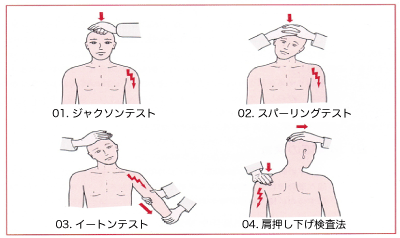
During the acute phase of pain, rest is advised, and a corset may be worn. Nonsteroidal anti-inflammatory drugs (NSAIDs) or suppositories and nerve blocks may be used to alleviate pain. Once the pain subsides, physical therapy and exercise therapy such as traction may be performed. If these methods do not result in improvement or if there is weakness in the legs or urinary problems, surgery may be recommended. Minimally invasive surgeries using endoscopy have also become widely used recently.
During the acute phase, rest for the neck is emphasized, and cervical collars may be used. Pain relief through anti-inflammatory medications and nerve blocks is commonly done. Depending on the symptoms, traction therapy or exercise therapy may also be used. If symptoms persist without improvement, or if there is sustained weakness in the limbs, walking problems, or urinary issues, surgical treatment may be considered.
Treatment for herniated discs can be either surgical (invasive) or conservative (non-surgical). Here, we will describe the conservative treatment approach used in our clinic.
One effective conservative treatment for herniated discs is “Ultrasound Acupuncture”, a revolutionary treatment unique to our clinic.
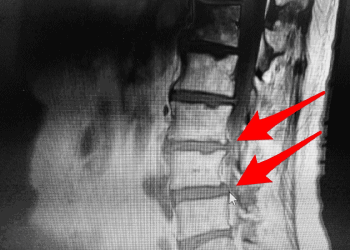
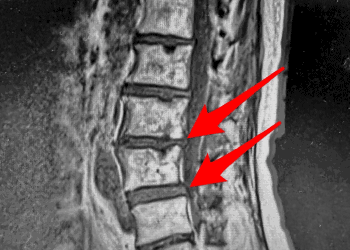
MRI was performed at an affiliated medical institution. By understanding the affected area, the accuracy and effectiveness of medical treatment are enhanced.
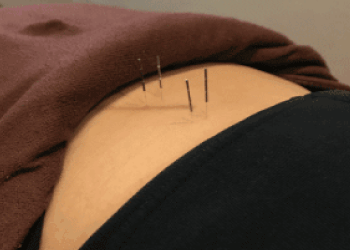
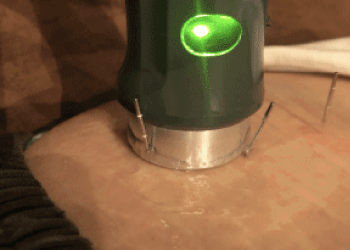
Ultrasound → Increased blood flow to the spinal artery and arterial plexus due to deep heat.
The affected area is examined with an ultrasound. The muscles of the healthy and affected side are checked for evenness or irregularity in the muscle arrangement while moving.
By identifying the affected area, the accuracy and effectiveness of the treatment are enhanced.
Pinpoint acupuncture is applied to areas with poor muscle gliding identified on ultrasound. Additionally, high-frequency therapeutic equipment and ultrasound therapy devices (Astron) are used to relieve muscle tension and inhibit pain transmission.
Ultrasound therapy uses sound waves to deliver high-frequency vibrations into the body, which promote healing by improving blood circulation. It also has a relaxing effect on muscles, reduces inflammation, and relieves pain.
For cervical disc herniation, ultrasound therapy is used to reduce swelling, improve blood flow, and promote healing of injured tissues.
Our clinic also offers acupuncture treatment specifically for herniated discs. The acupuncture works to reduce inflammation, relieve pain, and promote the healing of tissues affected by the disc.
© Copyright (C) All Rights Reserved..